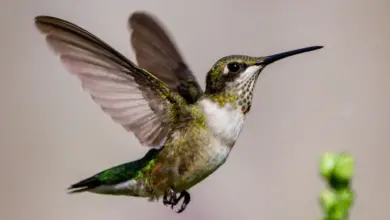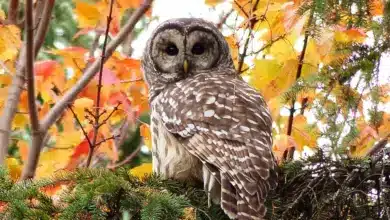Mantanani Scops Owl
The Mantanani Scops Owls (Otus mantananensis) – also known as South Philippines Scops Owls – are small scops owls found on small islands between the Philippines and the island of Borneo.
Distribution / Habitat / Status
The Mantanani Scops Owls occur naturally in
- Malaysia: on several small islands between the state of Sabah in northern Borneo (including the Mantanani group for which this species has been named); and
- central Philippines; and the Philippines island of Palawan, including Calamien, Rasa and Ursula, as well as islands in the Sulu Archipelago
Their preferred habitats are coconut groves and other wooded areas, where they are locally common.
However, this species is classified as “Near Threatened” (since 2004) due to their very small natural range, and small and fragmented populations which appear to be declining due to disturbed and degraded forest habitats.
BirdLife estimates that only about 10,000 – 20,000 of them have survived over their entire range and only about 100 of them are found on Mantanani Island.
Subspecies and Ranges:
- Mantanani Scops Owl(Otus mantananensis mantananensis – Sharpe, 1892) – Nominate Form
- Range: Mantanani Islands off the north-west coast of the state of Sabah in Malaysia in northern Borneo; and the islands of the southern coast of Palawan.
- Otus mantananensis romblonis (McGregor, 1905)
- Range: (Central) Philippine islands of Banton, Sibuyan, Romblon, Tablas, Tres Reyes and Semirara
- Otus mantananensis cuyensis (McGregor, 1904)
- Range: Islands of Dicabaito, Linapacan (southern Calamian group of islands) and Cuyo Islands in the Philippine province of Palawan
- Sulu Scops Owl(Otus mantananensis sibutuensis – Sharpe, 1893)
- Range: The islands of Sibutu and Tumindao located in southwestern Sulu Islands in the southwestern Philippines.
Description
The Mantanani Scops Owls measure, on average, 7.1 inches or 180 mm in length (including the tail). The average wing is about 6.1 inches or 155 mm long.
The upper plumage is dark brown with pale markings on the scapulars (shoulder feathers). The plumage below is paler with dark streaks and barring.
They have buff facial disks with narrow, dark borders. The bill and feet are grey and the lower legs are feathered. Their eyes (irises) are yellow.
Diet / Feeding
They mostly feed on insects, hunting at the forest edge or in clearings.
Breeding / Nesting
Mantanani Scops Owls are believed to breed from March to May. Their eggs are deposited in the cavities of trees.
Calls / Vocalizations / Sounds
Their vocalizations consist of simple waa and a goose-like honks; during territorial disputes with a descending series of short wa‘s.
The females’ voices are described as being lower and harsher than those of males.
Alternate (Global) Names
Chinese: ?????? … Czech: Výrecek jihofilipínský, výre?ek jihofilipínský … Danish: Mantanani-dværghornugle … Estonian: kookosepäll … Finnish: Filippiinienkyläpöllönen … French: Petit-duc de Mantanani … German: Mantananieule, Philippinen-Zwergohre, Philippinen-Zwergohreule … Italian: Assiolo delle Filippine meridionali, Assiolo di Mantanani … Japanese: boruneokonohazuku … Malay: Hantu Mantanani … Dutch: Mantanandwergooruil, Mantanan-dwergooruil, Mantananidwergooruil … Norwegian: Suluugle … Polish: syczek rafowy … Russian: ????? ? ??????? ?????????, ????????????? ????? … Slovak: výrik kokosový … Spanish: Autillo de la Mantanani, Autillo Malayo Sureño, Autillo Moluqueño … Swedish: Mantananidvärguv
More Owl Information
- Owl Information
- Index of Owl Species with Pictures
- Owl Eyes / Vision Adaptations
- Pygmy Owls
- Barn Owls
- Horned Owls
- Scops Owls




